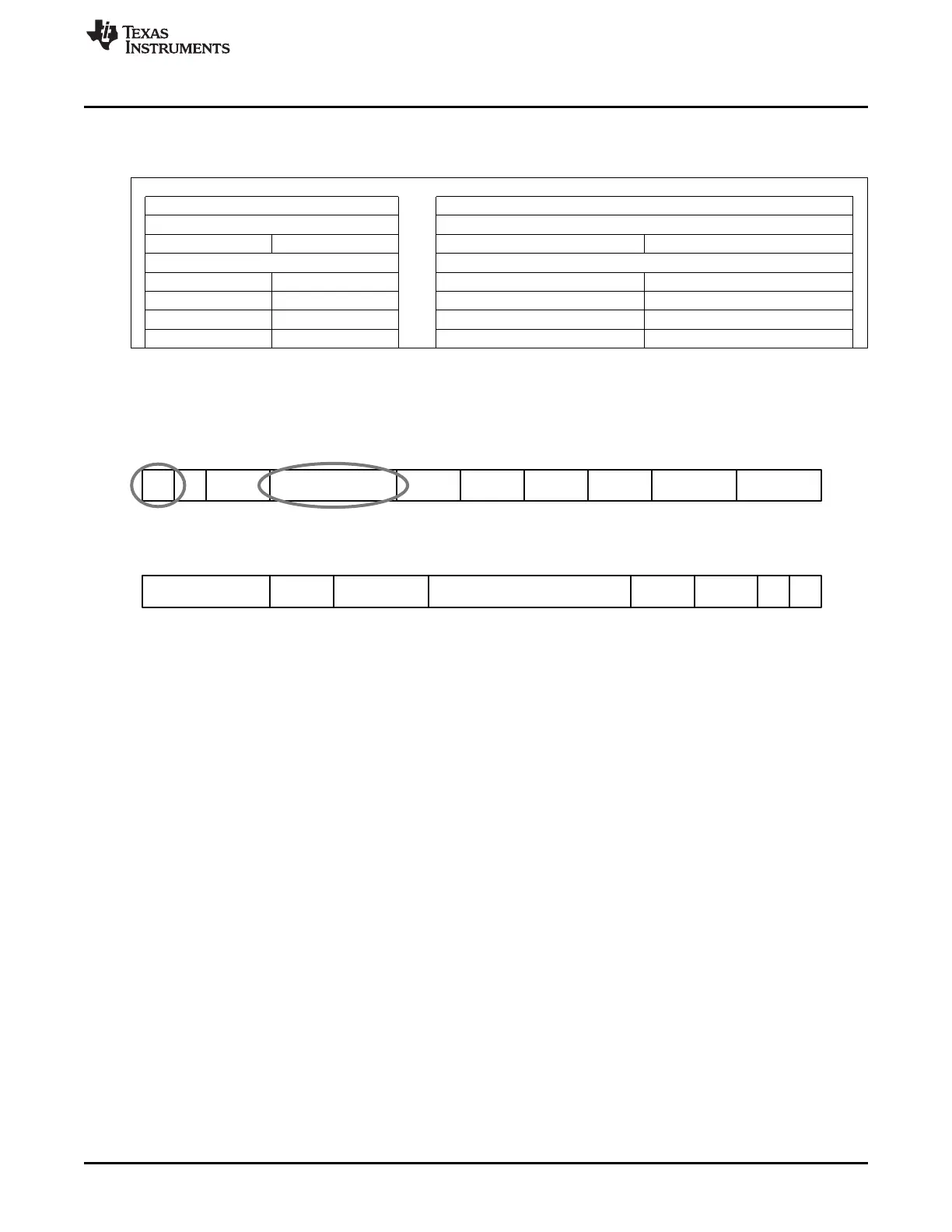0
31
0
30
29 28
00
27 24
0000
PRIV Rsvd Rsvd PRIVID ITCCHEN
23
0
TCCHEN
0
22
TCINTENITCINTEN
0
21
1
20
19 18
00
Reserved TCC
00
17 16
15 12
0000
TCC TCCMOD
0
11 10 8
000
FWID SAM
1
0
1
DAM
1
SYNCDIM
1
2
0
STATIC
3
7 4
0000
Reserved
(b)ChannelOptionsParameter(OPT)Content
www.ti.com
Functional Description
Figure 11-18. PaRAM Set Content for Proxy Memory Protection Example
(a) EDMA3 Parameters
Parameter Contents Parameter
0010 0007h Channel Options Parameter (OPT)
009F 0000h Channel Source Address (SRC)
0001h 0004h Count for 2nd Dimension (BCNT) Count for 1st Dimension (ACNT)
00F0 7800h Channel Destination Address (DST)
0001h 0001h Destination BCNT Index (DSTBIDX) Source BCNT Index (SRCBIDX)
0000h FFFFh BCNT Reload (BCNTRLD) Link Address (LINK)
0001h 1000h Destination CCNT Index (DSTCIDX) Source CCNT Index (SRCCIDX)
0000h 0001h Reserved Count for 3rd Dimension (CCNT)
Figure 11-19. Channel Options Parameter (OPT) Example
The PRIV and PRIVID information travels along with the read and write requests that are issued to the
source and destination memories.
For example, if the access attributes that are associated with the L2 page with the source buffer only allow
supervisor read, write accesses (SR,SW), the user-level read request above is refused. Similarly, if the
access attributes that are associated with the L1D page with the destination buffer only allow supervisor
read and write accesses (SR, SW), the user-level write request above is refused. For the transfer to
succeed, the source and destination pages should have user-read and user-write permissions,
respectively, along with allowing accesses from a PRIVID 0.
Because the programmer's privilege level and privilege identification travel with the read and write
requests, EDMA3 acts as a proxy.
Figure 11-20 illustrates the propagation of PRIV and PRIVID at the boundaries of all the interacting
entities (CPU, EDMA3CC, EDMA3TC, and slave memories).
911
SPRUH73H–October 2011–Revised April 2013 Enhanced Direct Memory Access (EDMA)
Submit Documentation Feedback
Copyright © 2011–2013, Texas Instruments Incorporated

